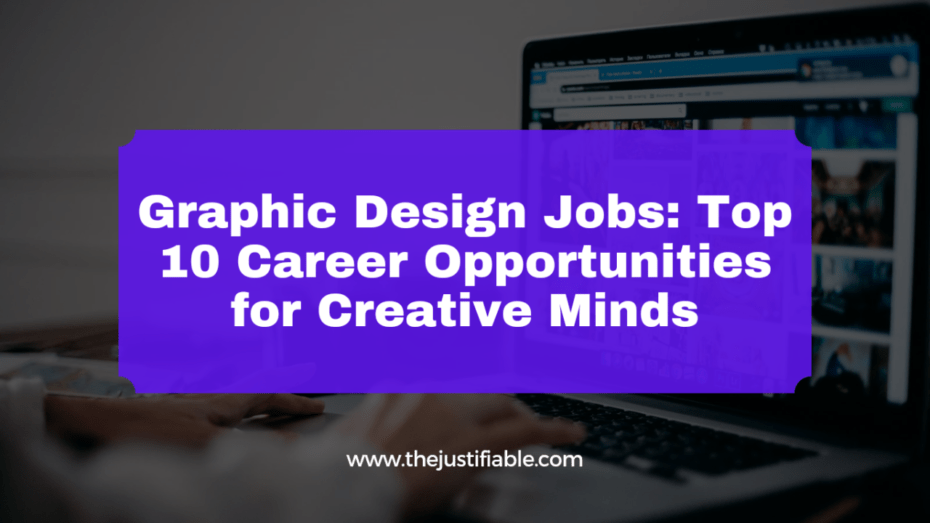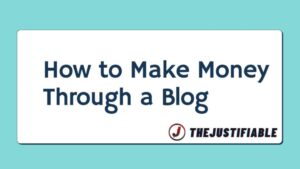Table of Contents
In today’s fast-paced digital world, graphic design has become an essential component in various industries. From advertising and marketing to entertainment and technology, graphic design professionals are in high demand.
As a creative mind exploring career opportunities, it’s crucial to understand the top graphic design jobs and how to excel in these positions.
This article will provide an in-depth overview of the top 10 career opportunities in graphic design, while touching upon relevant keywords like job market, salaries, and qualifications.
Importance of graphic design in modern industries
In the current digital era, the significance of graphic design in various industries cannot be overstated. As businesses strive to distinguish themselves from the competition, effective visual communication plays a vital role in conveying brand identity and capturing consumer attention.
Graphic design serves as the visual language that bridges the gap between a company’s products or services and its target audience. The influence of graphic design extends beyond just aesthetics, as it has the power to evoke emotions, inspire ideas, and even drive consumer behavior.
From the initial logo design to the overall user experience, graphic design professionals work diligently to create impactful visuals that resonate with their intended audience.
In industries like advertising, marketing, entertainment, and technology, graphic design is now considered an indispensable tool for fostering brand recognition and fostering customer engagement.
Growing demand for graphic design professionals
As the world becomes more visually driven, the demand for skilled graphic design professionals continues to grow. With the rise of digital platforms, companies are recognizing the importance of establishing a strong online presence, leading to an increased need for talented designers who can create visually striking and effective digital content.
This surge in demand is also fueled by the expansion of industries such as gaming, animation, and virtual reality, where graphic design plays a crucial role in crafting immersive experiences.
Furthermore, the shift towards remote work and the gig economy has opened up new opportunities for freelance graphic designers, making it an increasingly attractive career path for creative individuals.
The growing demand for graphic design professionals is not only indicative of the field’s importance in modern industries but also speaks to the vast array of opportunities available to those with the right skills and passion.
Overview of top career opportunities
The realm of graphic design offers a diverse range of career paths for creative minds to explore. From traditional roles like graphic designers and art directors to more specialized positions such as UX/UI designers and motion graphics artists, the possibilities are vast and continually evolving.
The top career opportunities in graphic design are not only defined by their prominence within the industry but also by the potential for growth, job satisfaction, and earning potential.
In this article, we will delve into the top 10 graphic design career opportunities, providing insights into the job market, salaries, and qualifications required for each role. This comprehensive overview will serve as a valuable resource for aspiring graphic design professionals as they navigate their career journey and discover the unique opportunities available within this dynamic and ever-growing field.
Top 10 Graphic Design Career Opportunities
The world of graphic design offers an abundance of exciting career paths for those with a flair for creativity and a keen eye for detail. As the industry continues to evolve, new opportunities are emerging that cater to a diverse range of skills and interests.
In this section, we will explore the top 10 graphic design career opportunities, providing insights into each role’s unique characteristics and requirements. From traditional roles like graphic designers and web designers to specialized fields such as motion graphics and 3D design, there’s a career path to suit every creative mind.
As you read on, you’ll discover the scope of these opportunities, the potential for growth, and the skills needed to excel in each position. Whether you’re an aspiring designer looking to enter the job market or a seasoned professional seeking new challenges, this comprehensive guide will help you navigate the vibrant and dynamic landscape of graphic design careers.
1. Graphic Designer
As a graphic designer, you hold the key to visual communication, using your creativity and technical skills to produce engaging designs that resonate with your target audience. This multifaceted role allows you to work on a diverse range of projects, from designing logos and marketing materials to crafting website layouts and product packaging.
With the ever-growing demand for skilled designers, entry-level graphic design jobs offer a promising starting point for those looking to make their mark in the industry.
These positions typically require a bachelor’s degree in graphic design or a related field, as well as a strong portfolio showcasing your unique talents and creative abilities. As you gain experience, you’ll have the opportunity to refine your skills, explore new design techniques, and potentially specialize in a specific area of interest.
In terms of job responsibilities, graphic designers are tasked with a variety of duties, all centered around creating visually appealing and effective designs. One of the primary responsibilities is collaborating with clients or internal teams to understand the project’s goals and requirements.
This often involves conducting research, brainstorming ideas, and developing concepts that align with the desired message and brand identity. Once a design concept is established, you’ll use your technical skills to create the final artwork, utilizing various design software programs such as Adobe Illustrator, and InDesign.
Throughout the design process, you’ll need to adhere to project deadlines, manage revisions, and effectively communicate your ideas to clients or team members. The career path of a graphic designer offers ample opportunities for growth and specialization, with many professionals choosing to focus on areas like branding, digital design, or print design.
As you advance in your career, you may also consider transitioning to roles such as art director, creative director, or even starting your own design agency. With endless possibilities and a thriving job market, a career as a graphic designer is an excellent choice for those with a passion for visual storytelling and a desire to make a lasting impact in the world of design.
2. Web Designer
In today’s digital age, a strong online presence is essential for businesses of all sizes and industries. As a web designer, you play a pivotal role in creating visually appealing and user-friendly websites that effectively convey a brand’s message and engage their target audience.
Combining both creative and technical skills, web designers are responsible for designing and developing websites that not only look great but also provide a seamless user experience. This dynamic role offers a multitude of opportunities for those passionate about digital design and eager to make an impact in the ever-evolving world of the internet.
To excel as a web designer, you’ll need a solid understanding of design principles, as well as proficiency in various web design tools and technologies such as HTML, CSS, JavaScript, and content management systems like WordPress. A background in graphic design or a related field is often beneficial, as it provides a strong foundation in design concepts and software.
Building a robust portfolio that showcases your web design skills and creativity is crucial in attracting potential clients or employers, demonstrating your ability to create visually stunning and functional websites. The job responsibilities of a web designer encompass a wide range of tasks, from initial concept development to final website launch.
You’ll often start by meeting with clients or internal teams to discuss the project’s goals, target audience, and desired aesthetic. From there, you’ll create wireframes or mockups to outline the website’s structure and layout, ensuring that the design aligns with the client’s expectations and brand identity.
Once the design concept is approved, you’ll move on to the development phase, using various coding languages and frameworks to bring your design to life. Throughout the process, you’ll also need to consider aspects such as responsive design, search engine optimization (SEO), and site performance, ensuring that the final product is both visually appealing and user-friendly.
3. UX/UI Designer
In the realm of digital design, UX/UI designers hold a unique and crucial position, combining both user experience (UX) and user interface (UI) design to create intuitive and visually appealing digital products. This interdisciplinary role focuses on understanding and addressing the needs of users, ensuring that the end product delivers a seamless and satisfying experience.
As a UX/UI designer, you’ll be responsible for crafting interfaces that are not only aesthetically pleasing but also highly functional, catering to the specific requirements of the target audience. This dynamic career path offers abundant opportunities for those interested in the intersection of design, technology, and human behavior.
To succeed as a UX/UI designer, you’ll need a strong foundation in design principles, as well as a deep understanding of user-centered design methodologies. Proficiency in various design tools, such as Adobe XD, Sketch, or Figma, is essential, as these tools are commonly used to create wireframes, prototypes, and high-fidelity mockups.
A background in graphic design, psychology, or a related field can be advantageous, providing valuable insights into visual communication and human behavior. Developing a diverse portfolio that showcases your UX/UI design skills and problem-solving abilities is crucial for attracting potential clients or employers, demonstrating your capacity to create user-friendly and visually compelling digital experiences.
The job responsibilities of a UX/UI designer encompass a wide range of tasks, starting with user research to identify the needs, preferences, and pain points of the target audience. This research informs the design process, guiding the development of user personas, user flows, and wireframes that outline the structure and functionality of the digital product.
As you transition from UX to UI design, you’ll focus on crafting visually engaging interfaces, utilizing color, typography, and layout to create an attractive and cohesive aesthetic. Throughout the design process, you’ll collaborate with various stakeholders, including developers, product managers, and clients, ensuring that the final product meets the project’s goals and effectively addresses user needs.
4. Art Director
As an art director, you hold a pivotal position in the creative landscape, guiding the visual direction of various projects and leading a team of talented designers to bring your vision to life. This influential role requires a unique blend of creativity, leadership, and strategic thinking, as you’ll be responsible for overseeing the development and execution of design concepts across a wide range of mediums, from print and digital to video and multimedia.
Art directors can be found in various industries, including advertising, marketing, publishing, film, and television, offering an array of exciting opportunities for those with a passion for visual storytelling and creative direction. To excel as an art director, you’ll need a solid foundation in graphic design or a related field, as well as extensive experience in various design roles.
This background equips you with a deep understanding of design principles, software, and techniques, enabling you to effectively communicate your ideas and provide guidance to your team.
In addition to technical skills, strong leadership and project management abilities are crucial for successfully overseeing the creative process, managing deadlines, and ensuring that the final product aligns with the project’s goals and brand identity.
Developing a diverse portfolio that showcases your unique vision and creative achievements is essential for attracting potential clients or employers, demonstrating your ability to lead and inspire a team of designers. The job responsibilities of an art director encompass a wide range of tasks, starting with the development of a creative brief that outlines the project’s goals, target audience, and desired aesthetic.
From there, you’ll collaborate with clients, copywriters, designers, and other stakeholders to brainstorm ideas and develop concepts that effectively convey the desired message. As you guide your team through the design process, you’ll provide feedback and direction, ensuring that the final artwork adheres to the established guidelines and meets the client’s expectations.
Throughout the project, you’ll also need to manage budgets, timelines, and resources, balancing creative aspirations with practical constraints.
5. Brand Identity Designer
In the competitive world of business, a strong and cohesive brand identity is crucial for setting a company apart from its rivals and establishing a memorable presence in the minds of consumers.
As a brand identity designer, you play an essential role in shaping a company’s visual language, crafting a unique and consistent aesthetic that effectively communicates the brand’s values, personality, and message.
This specialized role requires a keen eye for design, a deep understanding of visual communication, and a strategic approach to developing a comprehensive visual identity that resonates with the target audience.
To succeed as a brand identity designer, you’ll need a solid foundation in graphic design or a related field, as well as a thorough understanding of branding principles and strategies.
Proficiency in various design software programs, such as Adobe Illustrator, Photoshop, and InDesign, is essential, as these tools are commonly used to create logos, color palettes, typography, and other brand assets.
A strong portfolio that showcases your branding expertise and creative abilities is critical for attracting potential clients or employers, demonstrating your ability to develop unique and cohesive brand identities that effectively convey a company’s essence.
The job responsibilities of a brand identity designer encompass a wide range of tasks, beginning with the development of a creative brief that outlines the client’s goals, target audience, and desired brand personality.
From there, you’ll conduct research and analysis, examining the competitive landscape, industry trends, and consumer preferences to inform your design decisions.
As you develop the brand identity, you’ll create various visual assets, including logos, color schemes, typography, and brand guidelines that ensure consistency across all communication channels.
Throughout the process, you’ll collaborate with clients, marketing teams, and other stakeholders, refining your designs and ensuring that the final brand identity effectively conveys the desired message and aligns with the client’s objectives.
6. Motion Graphics Designer
In an increasingly digital world, motion graphics have emerged as a powerful tool for capturing the attention of audiences and delivering dynamic, engaging visual content. As a motion graphics designer, you are at the forefront of this exciting field, using your creativity and technical skills to produce captivating animations, visual effects, and interactive media.
This specialized role blends elements of graphic design, animation, and video production, offering a diverse and rewarding career path for those with a passion for storytelling and a flair for bringing visuals to life. To excel as a motion graphics designer, you’ll need a solid foundation in graphic design or a related field, as well as a strong grasp of animation principles and techniques.
Proficiency in various design and animation software programs, such as Adobe After Effects, Cinema 4D, and Premiere Pro, is essential, as these tools are commonly used to create motion graphics, visual effects, and video content.
Building a robust portfolio that showcases your motion graphics skills, creativity, and ability to convey complex ideas through engaging visuals is crucial for attracting potential clients or employers, demonstrating your capacity to create compelling and impactful motion content.
The job responsibilities of a motion graphics designer encompass a wide range of tasks, from initial concept development to final rendering and delivery. You’ll often start by collaborating with clients or internal teams to discuss the project’s goals, target audience, and desired aesthetic.
From there, you’ll develop storyboards or animatics that outline the structure and flow of the motion content, ensuring that the design aligns with the client’s expectations and brand identity.
Once the concept is approved, you’ll move on to the production phase, using various design and animation tools to bring your vision to life. Throughout the process, you’ll need to manage project deadlines, collaborate with other creative professionals, and effectively communicate your ideas to clients or team members.
7. Illustrator
In the diverse realm of visual arts, illustrators hold a special place as skilled artists who bring stories, ideas, and concepts to life through their unique and imaginative creations. As an illustrator, you’ll use your artistic talents to produce a wide range of visual content, from book covers and editorial illustrations to concept art and advertising campaigns.
This versatile career path offers countless opportunities for creative expression and professional growth, making it an ideal choice for those with a passion for art and a desire to share their vision with the world.
To succeed as an illustrator, you’ll need a strong foundation in drawing, painting, or another related field, as well as a deep understanding of visual storytelling and composition.
Proficiency in various illustration tools and software programs, such as Adobe Illustrator, Photoshop, or Procreate, is essential, as these tools are commonly used to create digital illustrations and refine traditional artwork.
Developing a diverse and robust portfolio that showcases your illustration skills, creativity, and unique style is critical for attracting potential clients or employers, demonstrating your ability to convey complex ideas and emotions through compelling visuals.
The job responsibilities of an illustrator encompass a wide range of tasks, depending on the specific project and industry. You’ll often start by collaborating with clients or internal teams to discuss the project’s goals, target audience, and desired aesthetic.
From there, you’ll create sketches or rough drafts that explore different visual approaches, ensuring that the final illustration aligns with the project’s objectives and resonates with the intended audience.
Once the concept is approved, you’ll refine your artwork, adding color, texture, and detail to create a polished and engaging illustration. Throughout the process, you’ll need to manage project deadlines, communicate effectively with clients or team members, and adapt your creative approach to meet the needs of the project.
8. Packaging Designer
In the world of consumer products, packaging design plays a critical role in capturing attention, conveying a brand’s message, and ultimately influencing purchasing decisions.
As a packaging designer, you’ll use your creative talents and design expertise to develop visually appealing and functional packaging solutions that not only protect and preserve the product but also create a memorable and engaging experience for consumers.
This specialized role combines elements of graphic design, industrial design, and marketing, offering a diverse and fulfilling career path for those passionate about aesthetics and keen on solving practical challenges.
To excel as a packaging designer, you’ll need a solid foundation in graphic design or a related field, as well as a strong understanding of packaging materials, production processes, and environmental considerations.
Proficiency in various design software programs, such as Adobe Illustrator, Photoshop, and InDesign, is essential, as these tools are commonly used to create packaging concepts, mockups, and final designs.
Building a robust portfolio that showcases your packaging design skills, creativity, and problem-solving abilities is crucial for attracting potential clients or employers, demonstrating your capacity to develop visually striking and functional packaging solutions.
The job responsibilities of a packaging designer encompass a wide range of tasks, starting with the development of a creative brief that outlines the project’s goals, target audience, and desired aesthetic. From there, you’ll conduct research and analysis, examining the competitive landscape, industry trends, and consumer preferences to inform your design decisions.
As you develop the packaging concept, you’ll need to consider various factors, such as materials, production costs, sustainability, and ease of use, ensuring that the final design meets both the client’s expectations and regulatory requirements.
Throughout the process, you’ll collaborate with clients, marketing teams, and other stakeholders, refining your designs and ensuring that the final packaging effectively conveys the desired message and aligns with the product’s brand identity.
9. Digital Marketing Designer
In the fast-paced and ever-evolving world of digital marketing, compelling and engaging visuals play a pivotal role in capturing the attention of audiences and driving desired outcomes. As a digital marketing designer, you’ll use your creative talents and design expertise to develop a wide range of visual assets for various digital marketing channels, such as social media, email campaigns, and online advertising.
This dynamic role demands a blend of graphic design, marketing, and communication skills, offering an exciting and rewarding career path for those passionate about aesthetics and eager to create a lasting impact in the digital landscape.
To succeed as a digital marketing designer, you’ll need a solid foundation in graphic design or a related field, as well as a strong understanding of digital marketing principles and strategies.
Proficiency in various design software programs, such as Adobe Illustrator, Photoshop, and InDesign, is essential, as these tools are commonly used to create digital marketing assets like banners, social media graphics, and email templates.
Building a diverse and robust portfolio that showcases your digital marketing design skills, creativity, and ability to convey complex ideas through engaging visuals is critical for attracting potential clients or employers, demonstrating your capacity to create compelling and effective digital marketing collateral.
The job responsibilities of a digital marketing designer encompass a wide range of tasks, depending on the specific project and marketing channel. You’ll often start by collaborating with clients or internal teams to discuss the project’s goals, target audience, and desired aesthetic.
From there, you’ll develop various visual assets, such as social media graphics, display ads, or email templates, ensuring that the design aligns with the client’s brand identity and effectively communicates the intended message.
Throughout the process, you’ll need to manage project deadlines, adhere to platform-specific guidelines and best practices, and stay up-to-date on the latest design trends and digital marketing techniques.
10. 3D Designer
In the realm of design, 3D designers hold a unique position, creating stunning and immersive visuals that transcend the limitations of traditional 2D design. As a 3D designer, you’ll use your artistic talents and technical skills to develop three-dimensional models, animations, and visualizations for a wide range of applications, such as video games, movies, product design, and architectural rendering.
This versatile and rapidly evolving field offers an exciting and rewarding career path for those passionate about visual storytelling and eager to explore the captivating world of 3D design.
To excel as a 3D designer, you’ll need a solid foundation in graphic design, animation, or a related field, as well as a strong understanding of 3D modeling, texturing, lighting, and rendering techniques.
Proficiency in various 3D design software programs, such as Autodesk Maya, 3ds Max, Blender, or Cinema 4D, is essential, as these tools are commonly used to create 3D models, animations, and visualizations.
Building a diverse and robust portfolio that showcases your 3D design skills, creativity, and ability to convey complex ideas through engaging visuals is crucial for attracting potential clients or employers, demonstrating your capacity to develop compelling and realistic 3D content.
The job responsibilities of a 3D designer encompass a wide range of tasks, depending on the specific project and industry. You’ll often start by collaborating with clients or internal teams to discuss the project’s goals, target audience, and desired aesthetic.
From there, you’ll create 3D models, scenes, or animations, carefully considering aspects such as geometry, texture, lighting, and camera angles to ensure that the final design achieves the desired level of realism and visual impact.
Throughout the process, you’ll need to manage project deadlines, collaborate with other creative professionals, and stay up-to-date on the latest 3D design trends and technologies.
How to Pursue a Career in Graphic Design
Embarking on a career in graphic design offers countless opportunities for creative expression and professional growth. If you’re passionate about visual storytelling and eager to make your mark in the world of design, follow these steps to set the foundation for a successful and fulfilling journey in the graphic design industry.
Necessary Skills and Education
To excel in the graphic design field, a combination of artistic talent, technical skills, and a strong educational foundation is crucial. As an aspiring graphic designer, you’ll need to develop a solid understanding of design principles, color theory, typography, and layout, which can be achieved through formal degree programs, online courses, or self-directed learning.
Pursuing a degree in graphic design or a related field, such as visual communication or digital media, can provide you with a comprehensive education, covering essential topics and exposing you to a variety of design disciplines.
Additionally, staying informed about industry trends, emerging technologies, and new design techniques is vital for continuous growth and adaptability in this fast-paced field. Technical skills are equally important, with proficiency in various design software programs, such as Adobe Illustrator, Photoshop, and InDesign, being essential for most graphic design roles.
Familiarity with additional tools and technologies relevant to your area of interest, such as web design, motion graphics, or 3D design, can further enhance your skillset and marketability.
Moreover, strong communication and collaboration abilities are vital for working effectively with clients, colleagues, and other creative professionals, while problem-solving and critical-thinking skills are invaluable for tackling design challenges and developing innovative solutions.
Building a Strong Portfolio
Your portfolio is a reflection of your skills, creativity, and unique style, making it an indispensable asset for showcasing your talents to potential clients or employers. As you embark on your graphic design career, focus on creating a diverse and robust portfolio that highlights your versatility and ability to tackle various design challenges.
Include a range of projects, such as logos, web designs, print materials, and any other work relevant to your specific interests and expertise. Ensure that each piece demonstrates your design skills, creativity, and problem-solving abilities, effectively showcasing your potential as a graphic designer.
To create a strong portfolio, consider working on personal projects, volunteering for non-profit organizations, or taking on freelance assignments. These opportunities can not only help you expand your portfolio but also provide valuable real-world experience and a chance to refine your skills.
Additionally, creating an online presence for your portfolio is essential, as it allows for easy access and sharing with potential clients or employers. Regularly update your portfolio to reflect your growth and evolving style, and seek feedback from peers, mentors, or industry professionals to continually improve and hone your craft.
Networking and Professional Development
Building a successful graphic design career requires more than just artistic talent and technical skills; it also involves cultivating a professional network and engaging in continuous learning and development.
Attending industry events, conferences, and workshops can provide valuable opportunities to connect with fellow designers, learn about the latest trends and techniques, and gain insights into the design world.
Consider joining professional organizations, such as AIGA or the Graphic Artists Guild, which offer resources, support, and networking opportunities for designers at all stages of their careers. Social media platforms, like LinkedIn, Behance, and Dribbble, can also be invaluable tools for networking and showcasing your work, allowing you to connect with other professionals, potential clients, and even employers.
Engage with the design community by sharing your projects, offering feedback on others’ work, and participating in online discussions and forums. Additionally, seek out mentorship and educational opportunities to further your skills and knowledge, whether through online courses, workshops, or simply learning from experienced professionals in your network.
By prioritizing networking and professional development, you’ll be better equipped to navigate the ever-evolving landscape of graphic design and forge a rewarding and enduring career in this dynamic field.
Encouraging Creative Minds to Explore These Career Opportunities
If you possess a passion for visual storytelling and a drive to create meaningful and captivating designs, a career in graphic design offers an incredible opportunity to channel your creativity and make a lasting impact on the world around you.
With a wide range of career paths available, from graphic designer and web designer to art director and motion graphics specialist, there is no shortage of opportunities for talented and dedicated individuals to thrive and excel in the design industry.
To pursue a successful career in graphic design, focus on developing a strong foundation in design principles, mastering essential software tools, and continuously refining your skills and knowledge.
Build a diverse and impressive portfolio to showcase your talents, and actively engage in networking and professional development to establish valuable connections and stay current with industry trends.
By embracing the challenges and rewards of a career in graphic design, you’ll be joining a vibrant community of creative professionals who are shaping the visual landscape and enriching the world with their unique perspectives and innovative designs.






